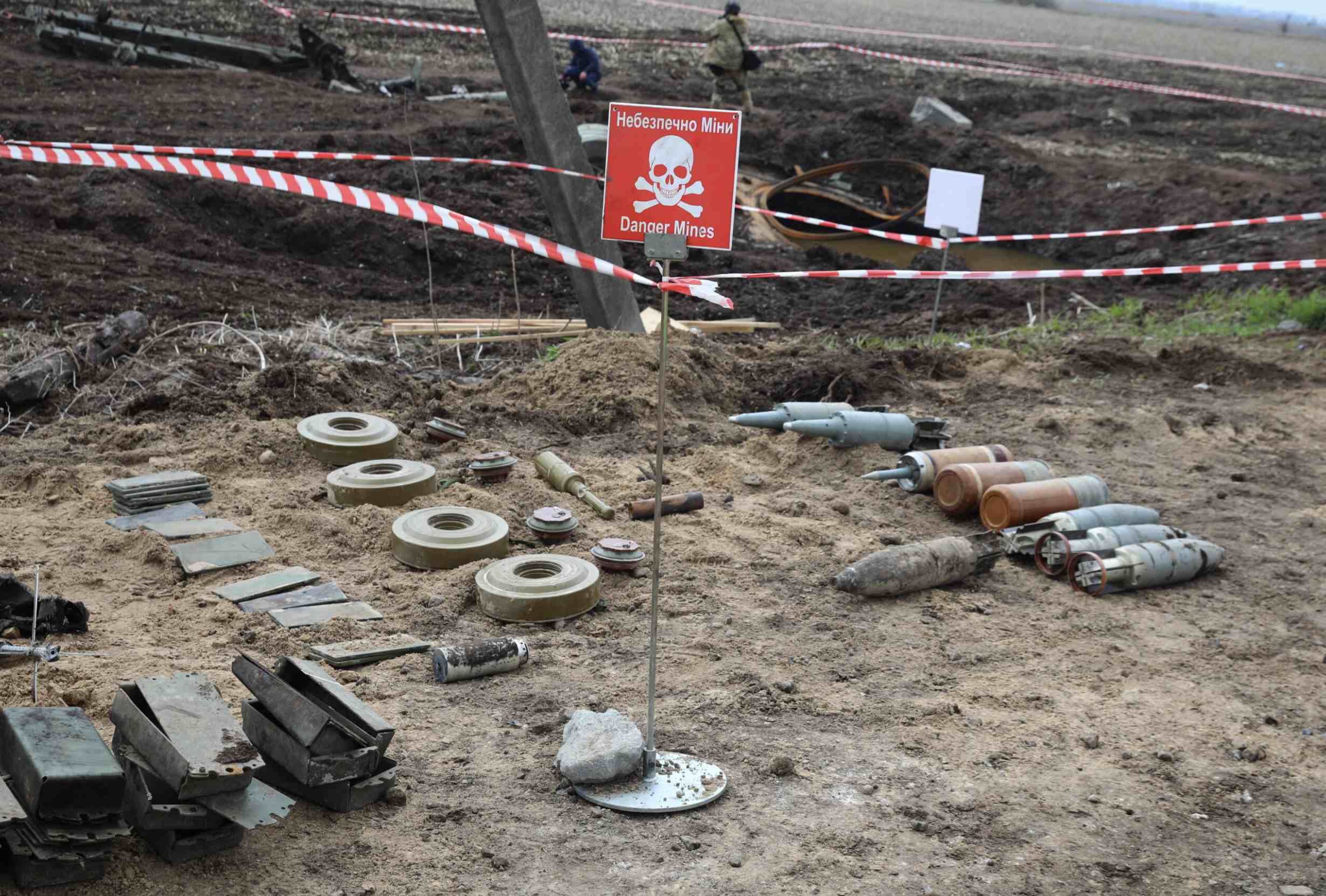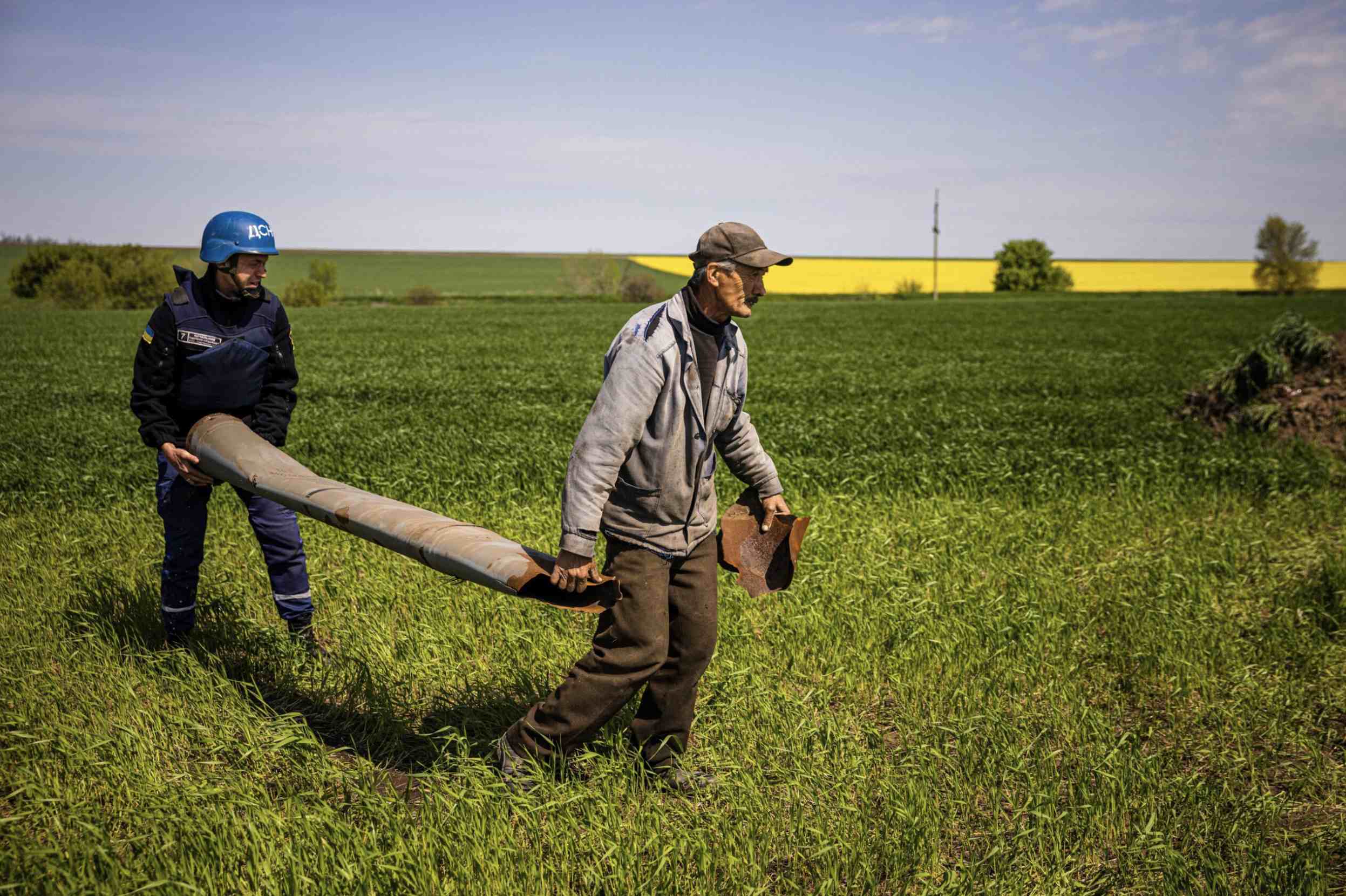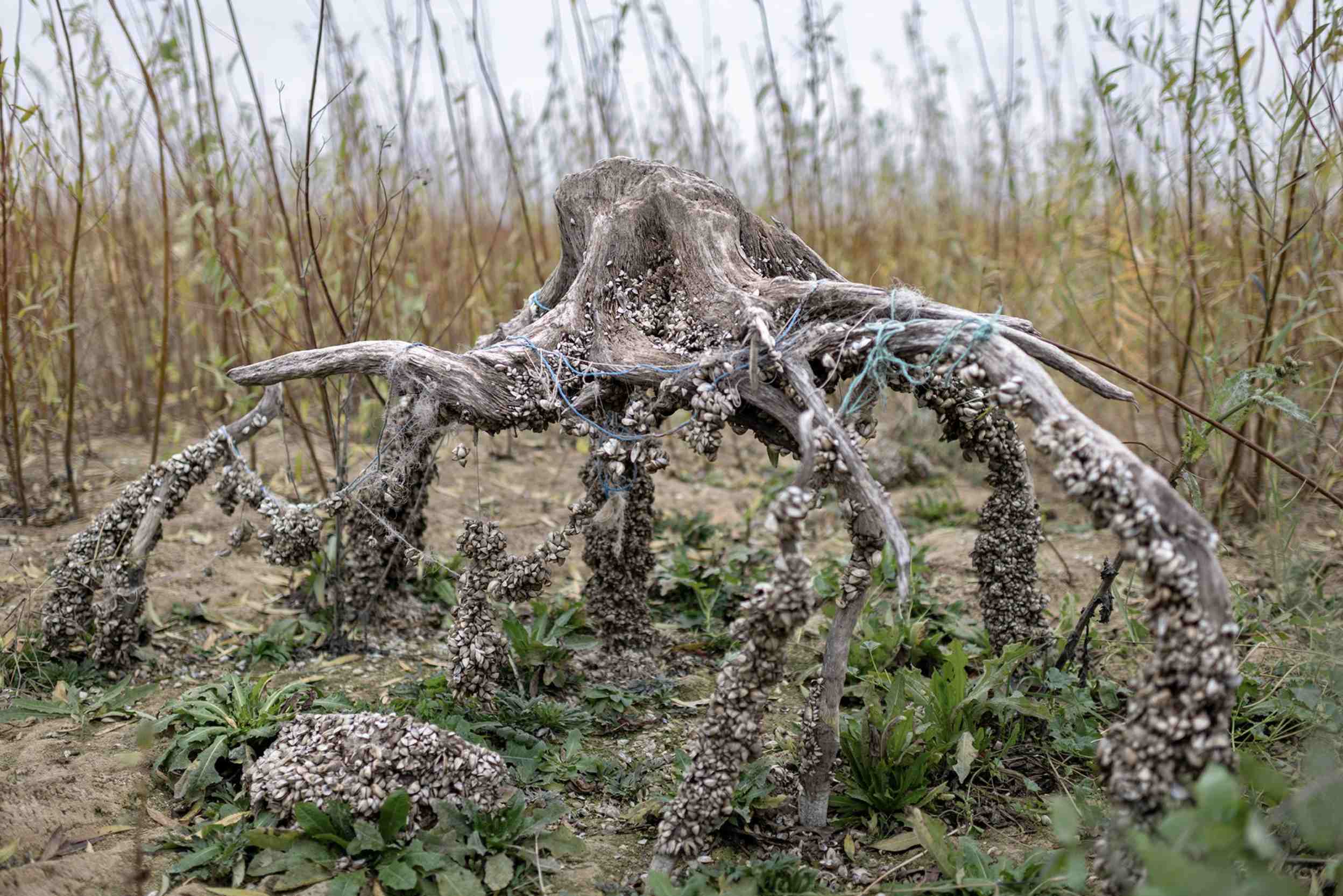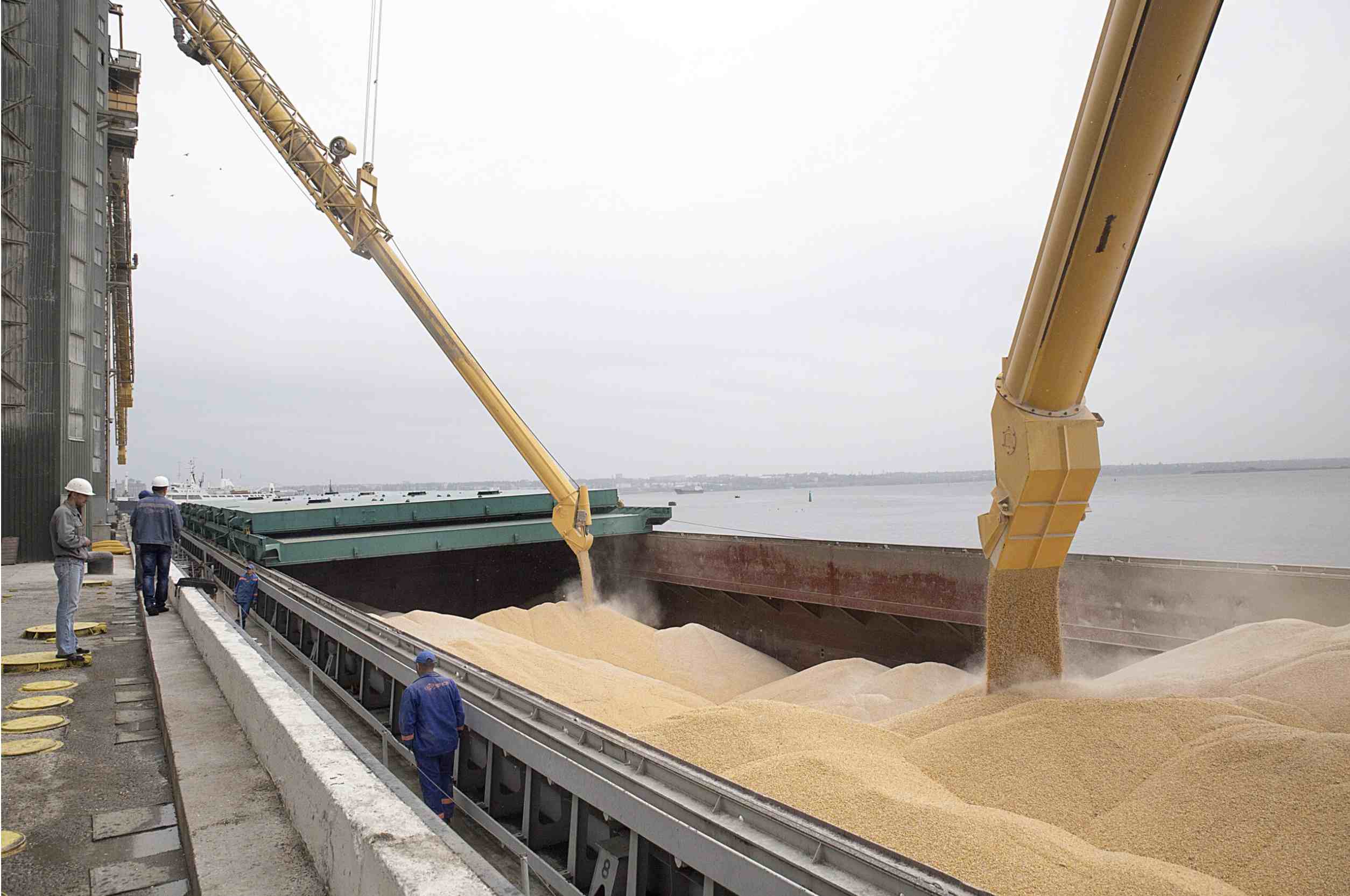War leaves its mark on everything: land, water, and people. But perhaps its consequences are felt most acutely by small-scale agricultural producers. In this article, we examine how the war has changed Ukrainian agriculture, focusing on the needs of small farms, which were actively developing before the war but are now facing an unprecedented crisis. We spoke with a Ukrainian farmer in the Kharkiv region whose story highlights the challenges of working in frontline areas.
Before the full-scale conflict began, small farmers grew crops traditional for the region: wheat, corn, and sunflowers. Many cultivated anywhere from a few to several dozen hectares, supplying food to local consumers. Prior to the war, agriculture was one of the most developed sectors of Ukraine’s economy, employing over 22% of the population—about 3 million people officially and another 1.5 million unofficially. However, the war has radically changed this situation. “The land is covered with shell craters, and in some places, remnants of rockets still stick out,” notes one farmer, emphasizing how the fighting has destroyed infrastructure and reduced the area of cultivated land.
The Impact of the War on Small-Scale Agricultural Production
In wartime conditions, small farmers have been forced to shift toward producing food for their own needs—a vital survival strategy, especially in the hardest-hit regions. As Natalia Mamonova notes, the need for food sovereignty has become critically important, as small-scale producers often face shortages of seed materials, which they must purchase themselves. One of the key barriers to food self-sufficiency is the destruction of irrigation infrastructure. As a farmer from the Kharkiv region explains, “the reservoir is gone... the groundwater has dropped. There were plans to use irrigation, but now all of that is lost.” Another adds: “Some people buried [their money] in the ground—bought pipelines, sprinklers, stations… But in the end, there’s no reservoir. The pipes are still in the ground.” As a result, even those farms that had the capacity to invest in land improvement have effectively lost those investments due to the war. Research shows that climate change has a particularly negative impact on small farms, as they lack the social, financial, and human capital that large agribusinesses possess (KSE, 2021). Combined with military and climate pressures, this heightens the vulnerability of small-scale farmers and threatens long-term food security at the local level.
A farmer from the Kharkiv region, located in an active combat zone, describes the limited presence of international organizations in frontline areas: “They came, but we didn’t even get in touch with them. These organizations came to the community, collected data on how much land needed to be cleared of mines on farms—we submitted all that information—but they all refused to help, saying it was too close and therefore too risky for them. The programs exist, but no one wants to work in this area now.”

Unexploded ordnance and other explosive devices found by members of the State Emergency Service of Ukraine’s demining team, April 2022. Photo: Oleksii Filippov / AFP
Demining: A Critically Important Step
Demining is a necessary condition for farms to resume operations. However, the cost of demining is a significant financial burden for farmers. “The cost of demining is 50,000 hryvnias per hectare. For us, that’s simply unrealistic,” says a farmer from the Kharkiv region. His farm has about 180 hectares of mined fields, making the resumption of full-scale activity virtually impossible under such conditions. Despite visits from representatives of international organizations who collected data, “none of them went out into the fields,” he notes. “They all refused because it’s too close to the front line.” Moreover, the responsibility for demining is often shifted onto the farmers themselves: “They told us to handle the demining... and then sent a letter saying that we’re the ones responsible.” This severely limits farmers’ ability to work most of their land, forcing them to leave large areas uncultivated. At the same time, large agribusinesses have significant advantages in this process: for instance, the company Nibulon has its own demining equipment, allowing it to restore operations more quickly and effectively. Such inequalities in resources and capabilities only deepen the challenges faced by small farmers, threatening both their economic stability and physical safety (TNI).
To overcome this barrier, a state-run demining program is needed—one with guaranteed funding, transparent access criteria, and the inclusion of small agricultural producers. One possible approach is the implementation of a public–private partnership for demining agricultural land. As demonstrated by the experience of Croatia—where, after the war, the government, in cooperation with the EU and local cooperatives, implemented a program for partial reimbursement of demining costs—such a model can be effective if proper monitoring is in place (GICHD, 2017). A similar model was also successful in Cambodia, where the government, donors, and NGOs developed a map of priority demining areas based on the needs of farmers and food security (MAG, 2020). In contrast, in Colombia, the failure to include the rural component in demining efforts led to prolonged inequality in land access and social tension in villages.
In this context, demining should be seen not only as a security issue but also as an “agricultural and social priority,” critical to restoring sustainable farming in Ukraine.

A farmer and a State Emergency Service officer carry an unexploded rocket left near the village of Hryhorivka in the Zaporizhzhia region, May 5, 2022. Photo: Dimitar DilkoffI / AFP
Environmental Catastrophe
War harms nature in all its forms, polluting water and soil resources with military waste. Remnants of ammunition, toxic substances, and heavy metals that enter the soil and water bodies create serious environmental problems that require long-term restoration. These pollutants not only destroy biodiversity but also negatively affect the health of people who continue to live on this land. Contaminated water sources can no longer provide safe drinking water, and polluted soil reduces crop yields and makes farming increasingly risky. Restoring ecosystems demands significant resources and time, further complicating the situation for local agricultural producers who are already suffering from the consequences of war. As a result, the environmental impact of the conflict becomes not only a local but also a global issue, as polluted natural resources know no borders.
According to estimates, more than 25% of Ukraine’s territory is currently mined, making it one of the most dangerous countries in the world in terms of landmines and explosive remnants of war. The destruction of reservoirs, such as the Kakhovka Dam, has led to the disappearance of water sources, affecting both farms and everyday life. “We used to have plans to develop irrigated agriculture, but now it’s impossible: the reservoirs have been destroyed, and the groundwater has disappeared,” says a farmer.
The farmer also speaks about the consequences of the hostilities for local ecosystems: “The forests burned; the plantations were destroyed—everything is ruined. In our city, the dam was damaged and collapsed in 2022. That caused the groundwater level to drop. If there had been plans for irrigation, it’s now impossible.” The destroyed reservoir requires demining and refilling, but according to farmers, this will take more than a year. In addition, the land requires reclamation: “We have up to 30 centimeters of arable soil there, but now clay and sand lie on top. Even after the war, until reclamation is carried out, it will be practically impossible to cultivate the land.” At the same time, there is currently no targeted state funding program for the restoration of hydraulic infrastructure, irrigation, or land reclamation. The only available initiative is a state compensation program for the costs of humanitarian demining of agricultural land, which allows farmers to receive 100% reimbursement for these activities through the State Agrarian Register via Prozorro. However, this program covers only demining services and does not include expenses for the subsequent restoration of infrastructure. As the farmers themselves note, “no one hears us, because no one needs us. Survive however you can—that’s what it’s called.” Thus, the full restoration of agricultural production and natural resources in combat zones requires an expansion of existing state programs, including through public–private partnerships and support from international donors, following the examples of Croatia or Cambodia. As UNEP (2023) emphasizes, postwar environmental recovery requires a systemic approach that combines engineering, ecological, and social solutions based on local needs.
In addition, land contaminated with heavy metals and toxic substances from munitions presents long-term challenges for food security. However, despite this critical situation, humanitarian aid often fails to meet the actual needs of local agricultural producers.

The dried bed of the Kakhovka Reservoir near the village of Maryanske, Dnipropetrovsk region. Photo: Oleksandr Rupeta
The Global Consequences of the War
Ukraine accounts for a significant portion of global agricultural production. Before the war, the country supplied about 40% of the grain for the UN World Food Programme. However, the blockade of ports and the destruction of infrastructure are threatening global food security. Experts note that the humanitarian system must adapt to new challenges, such as the war in Ukraine, whose consequences are felt far beyond the country’s borders. At the same time, some specialists believe that the war in Ukraine has served as a litmus test for the international system’s readiness to respond to complex, multidimensional crises. A similar conclusion is drawn in the analysis by Rubryka, which highlights the importance of developing innovative solutions for soil restoration.
It is important to note that during the war, international aid has often prioritized military operations over civilian issues. A former OSCE representative in Ukraine described the situation as follows: “What we faced during our human rights monitoring projects was that there was no real readiness to help or political will to truly provide support. Everyone was focused on military actions, either to minimize losses or to win the war, whatever that meant.” Given the security situation, a large-scale redistribution of international aid resources remains impossible while the war continues. However, some international organizations continue to provide limited support to the agricultural sector. In particular, the Food and Agriculture Organization of the United Nations (FAO), in collaboration with the European Union, is implementing grant programs for small and medium-sized agricultural producers in certain western regions of Ukraine. As part of the third phase of this program, announced in March 2024, farmers can receive up to UAH 416,500 (USD 10,000) to develop their farms, while cooperatives can receive up to UAH 1,041,250 (USD 25,000) (State Agrarian Register, 2024).
Further, the FAO has announced plans to support 406,900 Ukrainian farmers in 2025 by providing seeds, repairing irrigation systems, supplying feed, and offering other direct assistance. To this end, the organization is securing additional funding of USD 53 million (Interfax-Ukraine, 2024). However, as farmers from frontline regions report, such initiatives often fail to reach them due to geographical limitations, security concerns, and excessive bureaucracy.
Thus, while humanitarian and agricultural programs do exist, their scope, focus, and accessibility remain limited. Given that the war in Ukraine has become not only a security issue but also a political matter for donor countries, it is crucial to advocate for a more balanced and transparent approach to the distribution of support—particularly for those working under the greatest risks.

Loading grain onto a bulk carrier at the Mykolaiv Sea Port. Photo: Vincent Mundy / Bloomberg
The Human Dimension of the Tragedy
The war has also had a severe impact on people working on farms. “Before the war, we had six or seven people from the community working here. Now everyone has left. The equipment we managed to save was moved to a neighboring city. We ourselves now live in a different region,” a farmer recounts. The mass displacement of the population has deprived the region not only of its workforce but also of its social infrastructure. Schools and hospitals have been destroyed, most services have shifted online, and communities now rely on volunteers even for the most basic needs.
Despite horrific conditions, small-scale farmers are trying to revive their farms—even if only on a minimal scale. “We can’t just sit and wait for everything to be fixed. Even if it’s a small patch of land, we’ll try to grow something,” our interlocutor emphasizes. Within communities, people support one another: some help clear debris, others bring food or water. This fosters a sense that, despite all the hardships, life goes on.
As noted in a study by the UWEC Work Group, the contamination of Ukrainian land has long-term consequences for food security—both in Ukraine and globally. “We simply avoid areas where shells have clearly hit, based on our own observations,” a farmer explains. Restoring these territories will require not only time but also substantial investment, both international and domestic.
The war in Ukraine continues to have a devastating impact on small-scale agricultural production. Yet despite all the challenges, farmers demonstrate resilience, creativity, and a determination to rebuild their farms. They not only provide food for their communities but also preserve soils, seeds, traditional knowledge, and the social fabric of rural life. It is crucial to recognize their contribution to food security and support these efforts, as the survival of individuals—and the stability of entire regions and countries—depends on it.
At the institutional level, farmers can unite in cooperatives, community associations, or industry organizations, which help them better communicate their needs to government bodies and international donors. For example, in March 2024, several agricultural unions submitted an open appeal to the National Academy of Sciences of Ukraine, calling for the creation of a specialized government program to support small-scale farms in frontline territories, with a focus on demining, land reclamation, and water resource restoration (NASU, 2024).
The state and international institutions can support small-scale farmers through:
- Supporting the cooperative movement: funding the establishment and development of small farmer cooperatives in de-occupied regions.
- Inclusive grant programs: broadening the geographical scope of programs (such as those by the FAO) to include not only western regions but also frontline territories.
- Targeted programs for land reclamation and water restoration: modeled after forest or infrastructure restoration efforts but tailored to agroecological specifics.
- Strengthening farmers’ participation in policymaking: through advisory councils at ministries or regional food security forums.
Farmers’ resilience must be supported through systematic assistance that recognizes their key role in the postwar recovery—not only of agriculture but also of the country’s social life.




